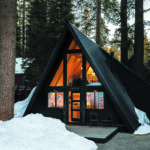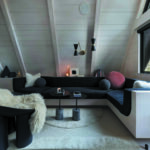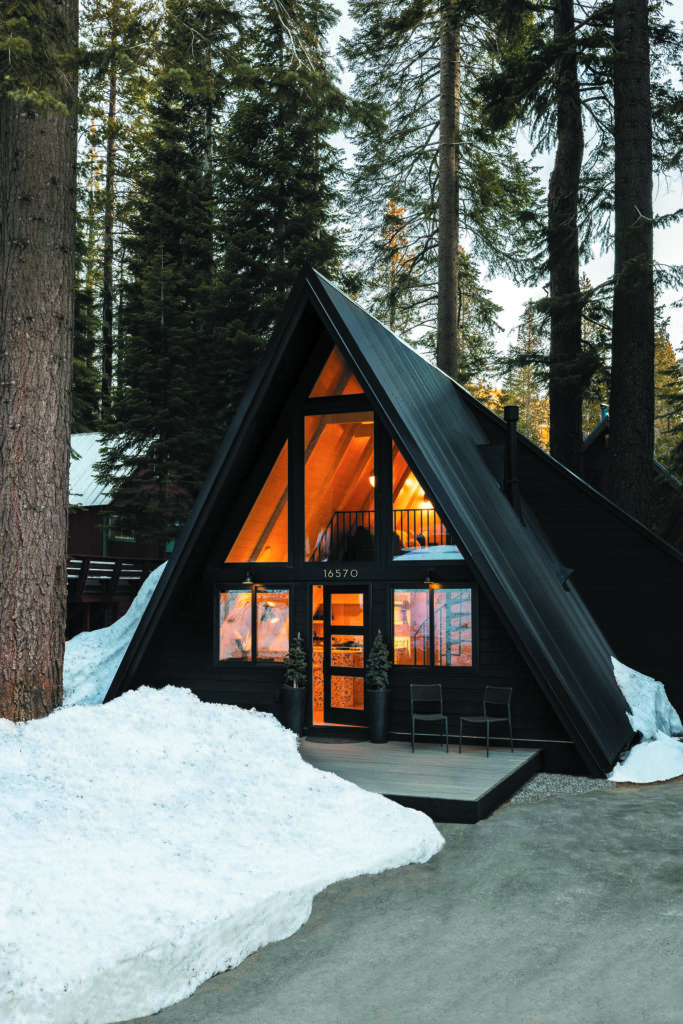A-Frame of Mind
Author:Anh-Minh LeIn Tahoe, Holly Hollenbeck brings an architectural and aesthetic fantasy to fruition
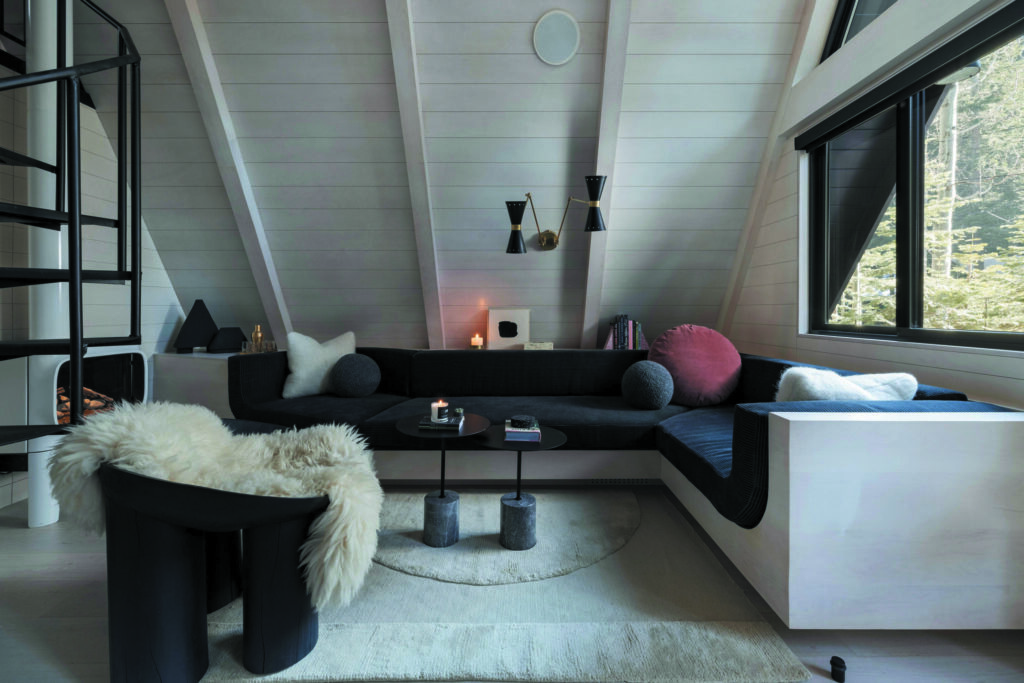
Holly Hollenbeck’s fascination with A-frames—those simple triangular structures with steeply angled sides and a pitched roof that resemble an uppercase letter A—goes back decades. “I’ve always had a deep- seated affection for them,” she shares. For years, when she and her family vacationed in Tahoe, she would search for A-frame rentals. (Although the style had long existed in Europe—the roofline, allowing snow to slide right off, made it especially popular for ski chalets—architect Rudolph Schindler designed what is possibly the first A-frame residence in the U.S. in Lake Arrowhead, California, around 1934.)
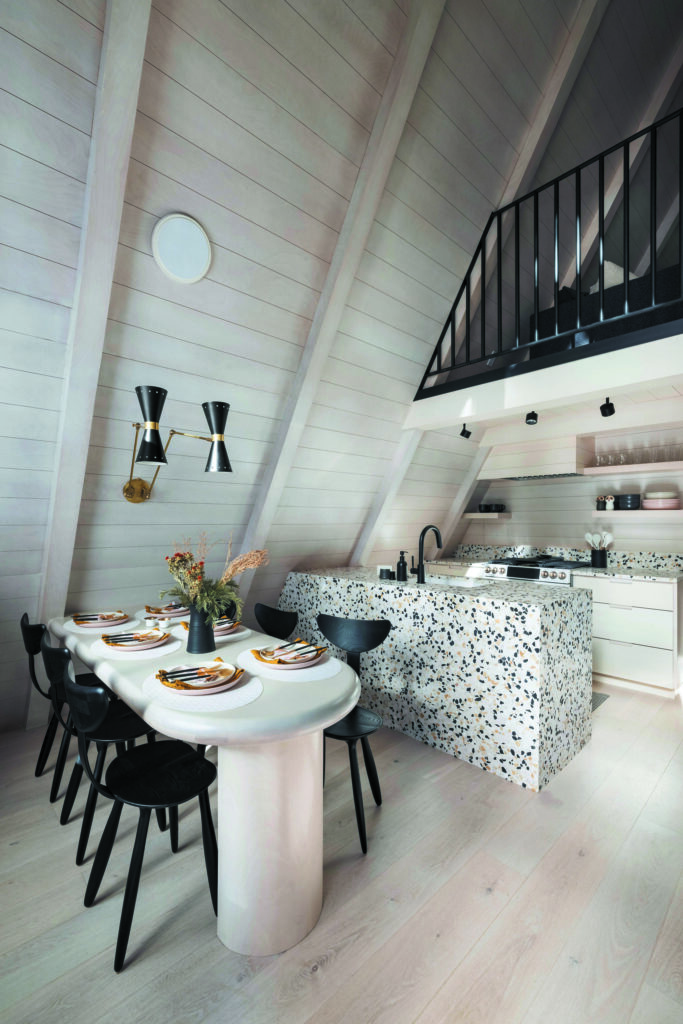
Photos by Stephanie Russo.
As an interior designer, Hollenbeck was keen to tackle an A-frame as a project. And she concluded that she had two options: “I can wait around for a client to show up with one,” she said, “or I can buy one.” The latter opportunity arose a couple of years ago when a 1962 A-frame house in Tahoe, Donner Lake, hit the real estate market. For sale by the original owners, it had remained largely intact since its construction. Think: shag carpeting throughout, in a variety of colors, such as blue in one room and green in another; Formica countertops; linoleum flooring; and Douglas fir paneling that had turned orange over time.
Hollenbeck, who lives and works between the Bay Area and Tahoe, reimagined the dwelling as a sleek “Nordic bento”—channeling design elements often associated with Norway and Japan—yet was mindful of its vintage. To retain some of the 1960s vibe, terrazzo surfaces and a cast-iron freestanding Jøtul stove were among her first design decisions. Early on, she dubbed the property “Little Owl,” even creating a logo—an A with an owl perched on its crossbar— that appears on napkins and towels; plus, during the renovation process, on hard hats.
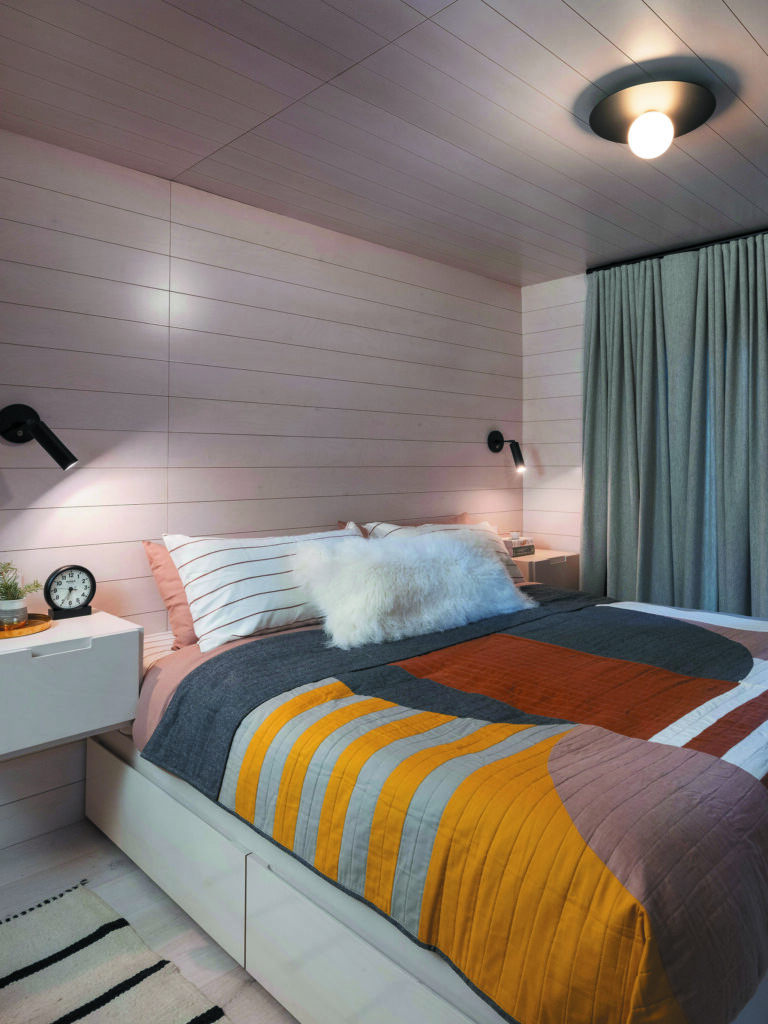
Photos by Stephanie Russo.
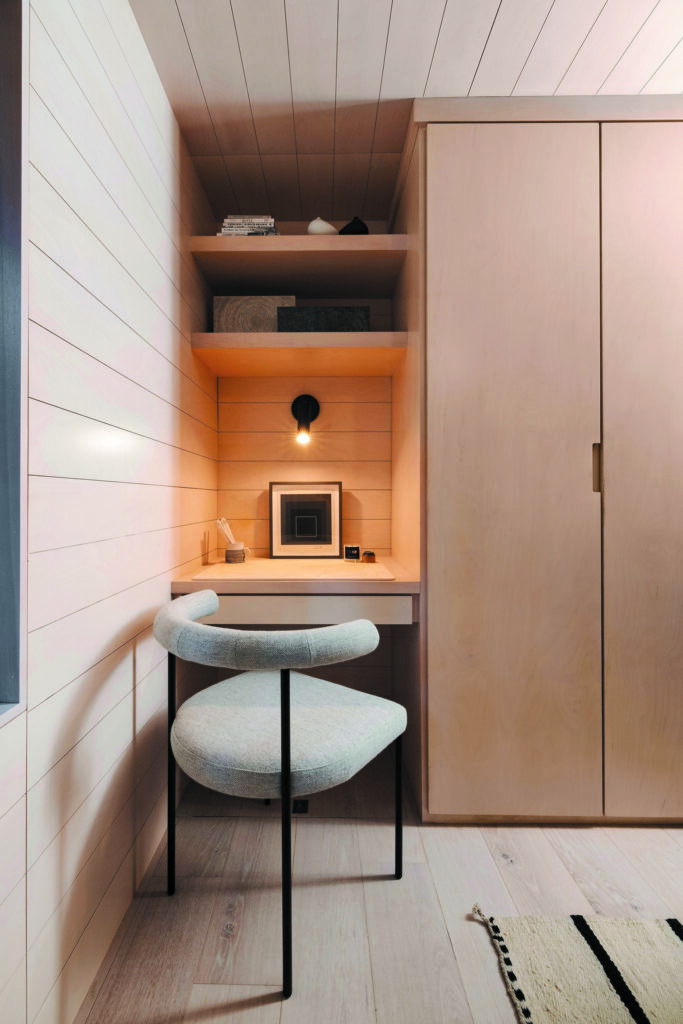
Outside, the home progressed from ho-hum brown to striking black, including the wood cladding, windows and roof. “I really wanted a black exterior, and then you open the door to this bright, blond interior,” explains Hollenbeck, noting the Baltic birch that now lines the walls and floors. Setting foot inside, on the right, an ample built-in sectional next to the stove beckons. On the opposite side of the room is the dining area, with a custom table that juts out from the wall, and a kitchen with an island and countertop composed of terrazzo.
The ground floor also contains two bedrooms and two bathrooms; the latter feature terrazzo, too. The original spiral staircase, which Hollenbeck painted matte black, leads to a loft above the kitchen. She changed out the upstairs railing to not only bring it up to code but also have it match the stairs, using the same paint and picket dimensions.
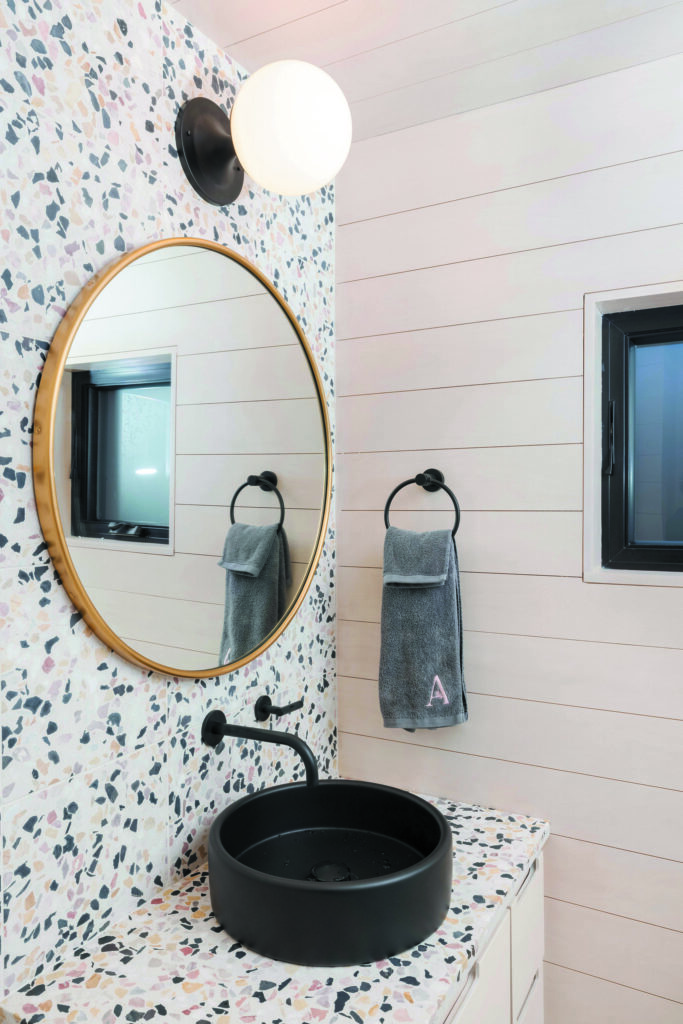
Working with a total of 1,200 square feet, Hollenbeck was eager to maximize efficiency. In the sleeping quarters, she installed built-in desks and floor-to-ceiling armoires—an idea inspired by a hotel in Kyoto. One bedroom is appointed with bunk beds, each thoughtfully executed with niches that provide storage, power sources and switches for the sconces. The quilts in the bedrooms were custom-made by Vacilando Studios and inject rare colorful moments. For the bunk beds, Hollenbeck “wanted the quilts to coordinate with the sheeting,” she says. “We sent extra sheets to Vacilando, so they cut those up and integrated them into the quilts.” Hollenbeck and her venture capitalist husband, Chris, recently sold Little Owl A-Frame to a local architect, who no doubt was enticed by the care and labor that went into the transformation. While the changes extended beyond aesthetics—for example, previously considered a summer home, the structure had lacked insulation—the new owner was clearly a fan of Hollenbeck’s vision. He purchased the accessories—right down to the owl-shaped salt and pepper shakers, towels embroidered with the logo and those custom quilts—as well as the furniture, most of which was designed specifically for the home to address its particular challenges.
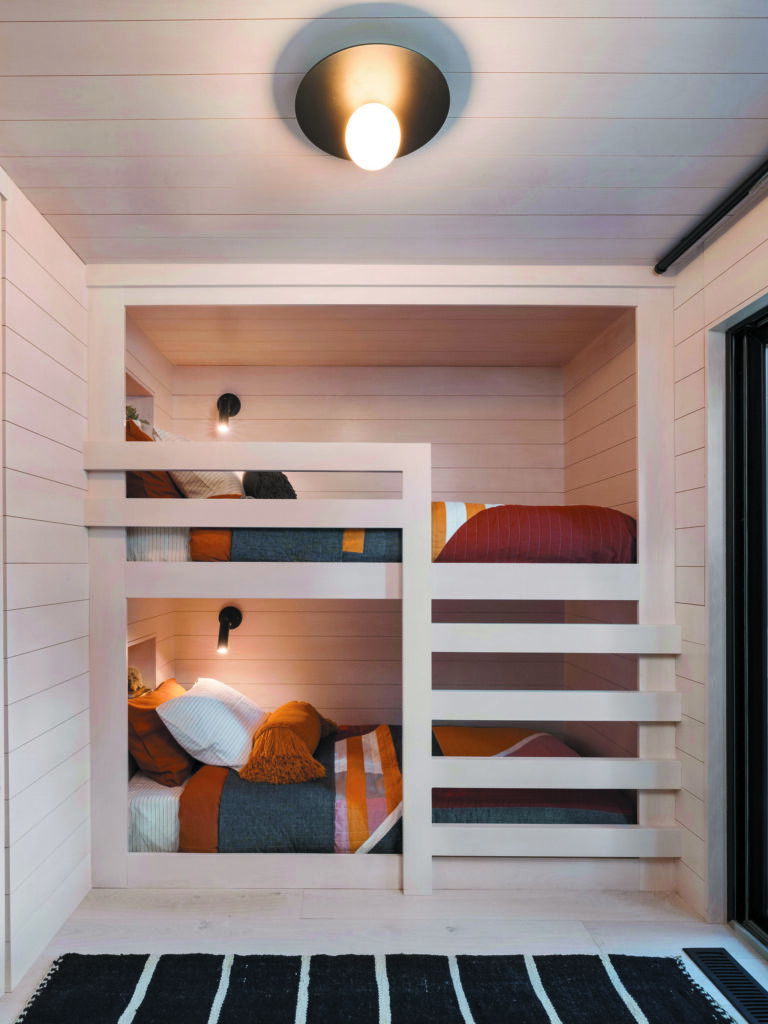
Take the roughly 10-feet-by-6-feet sectional, conceived by Holly Hollenbeck Designs and constructed by Natural Edge Saw Works, which was responsible for all of the home’s cabinetry and built-ins. The piece represented a first for Hollenbeck: “I’ve never designed a funky built-in sectional like that,” she elaborates. “We do a lot of custom furniture, but figuring out how to do a sectional like that, in a pitched room, where the ceiling is pitching inward … Figuring out the exact right seat height—how high you can go before you hit your head on the ceiling? That was unique.” Although Hollenbeck’s ownership of this A-frame has come to an end, her love for the architectural style has not. “In my fantasy world, I’ll build myself one someday,” she says with a laugh. “I need a bigger one.”
